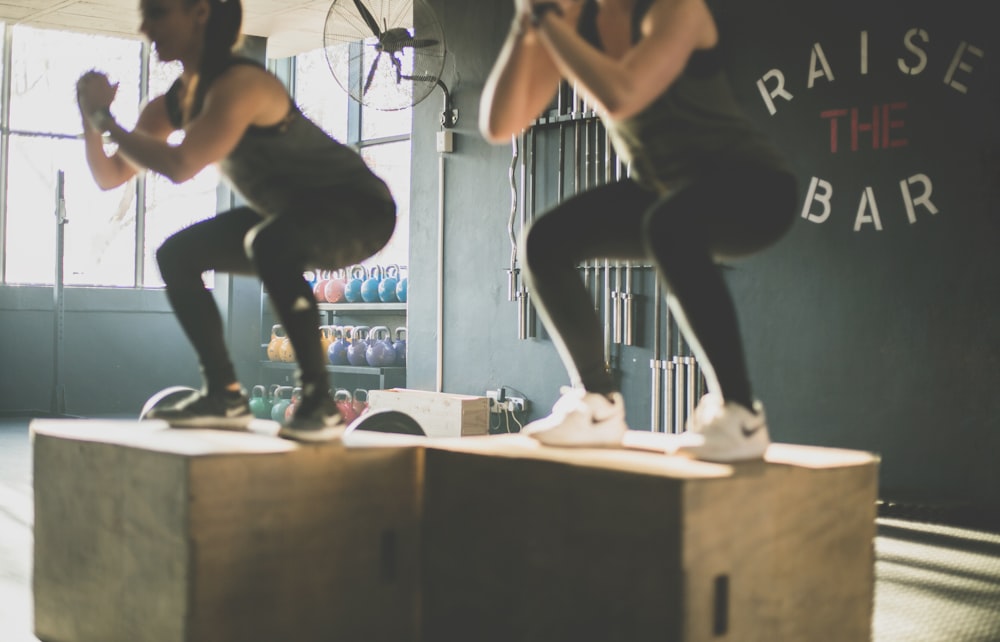目次
フルスクワットとハーフスクワットどちらが筋肥大に有効?
理学療法士・作業療法士がクライアントにスクワットを指導することは多いと思います.
スクワットといえば一般の方はフルスクワットを想像される方が多いようですが実際にはフルスクワットが困難な症例も少なくありません.
しかしながらフルスクワットとハーフスクワットのどちらが筋肥大に有効なのでしょうか?
今回はフルスクワットとハーフスクワットのどちらが筋肥大に有効なのかを考えるうえで参考になる論文をご紹介させていただきます.

今回ご紹介する論文
Eur J Appl Physiol. 2019 Sep;119(9):1933-1942. doi: 10.1007/s00421-019-04181-y. Epub 2019 Jun 22.
Effects of squat training with different depths on lower limb muscle volumes
Keitaro Kubo 1, Toshihiro Ikebukuro 2, Hideaki Yata 3
Affiliations expand
PMID: 31230110 DOI: 10.1007/s00421-019-04181-y
今回ご紹介する論文は2019年に掲載された論文です.
研究の目的
Purpose: The purpose of this study was to compare the effects of squat training with different depths on lower limb muscle volumes.
この研究では深さの異なるスクワットトレーニングが下肢筋量に及ぼす影響を比較することを目的としております.
研究の方法
Methods: Seventeen males were randomly assigned to a full squat training group (FST, n = 8) or half squat training group (HST, n = 9). They completed 10 weeks (2 days per week) of squat training. The muscle volumes (by magnetic resonance imaging) of the knee extensor, hamstring, adductor, and gluteus maximus muscles and the one repetition maximum (1RM) of full and half squats were measured before and after training.
男性17例をフルスクワットトレーニング群(FST,n=8)とハーフスクワットトレーニング群(HST,n=9)に無作為に割り付けております.
10週間(週2日)のスクワットトレーニングを行っております.
トレーニングの前後に膝関節伸展筋群,ハムストリング,内転筋,大殿筋の筋容積(MRIによる)とフルスクワットとハーフスクワットの1反復最大筋力(1RM)を測定しております.
研究の結果
Results: The relative increase in 1RM of full squat was significantly greater in FST (31.8 ± 14.9%) than in HST (11.3 ± 8.6%) (p = 0.003), whereas there was no difference in the relative increase in 1RM of half squat between FST (24.2 ± 7.1%) and HST (32.0 ± 12.1%) (p = 0.132). The volumes of knee extensor muscles significantly increased by 4.9 ± 2.6% in FST (p < 0.001) and 4.6 ± 3.1% in HST (p = 0.003), whereas that of rectus femoris and hamstring muscles did not change in either group. The volumes of adductor and gluteus maximus muscles significantly increased in FST (6.2 ± 2.6% and 6.7 ± 3.5%) and HST (2.7 ± 3.1% and 2.2 ± 2.6%). In addition, relative increases in adductor (p = 0.026) and gluteus maximus (p = 0.008) muscle volumes were significantly greater in FST than in HST.
フルスクワットの1RMの相対的増加は,フルスクワット(31.8±14.9%)がHST(11.3±8.6%)よりも有意に大きい結果でありました(p=0.003)が,ハーフスクワットの1RMの相対的増加はフルスクワット(24.2±7.1%)とハーフスクワット(32.0±12.1%)の間に差はありませんでした(p=0.132).
膝関節伸展筋群の体積はフルスクワットで4.9±2.6%(p<0.001),ハーフスクワットで4.6±3.1%(p=0.003)と有意に増加しましたが,大腿直筋とハムストリングの体積は両群とも変化しませんでした.
内転筋および大殿筋の体積はフルスクワット(6.2±2.6%および6.7±3.5%)およびハーフスクワット(2.7±3.1%および2.2±2.6%)で有意に増加しました.
さらに内転筋(p = 0.026)および大殿筋(p = 0.008)の相対的な筋量の増加はハーフスクワットよりもフルスクワットで有意に大きい結果でありました.
研究の結論
Conclusion: The results suggest that full squat training is more effective for developing the lower limb muscles excluding the rectus femoris and hamstring muscles.
この研究の結果から大腿直筋とハムストリングスを除く下肢筋の発達には,フルスクワットトレーニングがより効果的であることが示唆されました.
今回はフルスクワットとハーフスクワットのどちらが筋肥大に有効なのかを考えるうえで参考になる論文をご紹介させていただきました.
今回の結果から考えると大腿直筋とハムストリングスをターゲットとするのであればフルスクワットとハーフスクワットに大きな差はないということになりそうですが,他の下肢筋群もターゲットとするのであればフルスクワットの方が効果的ということになりますね.






